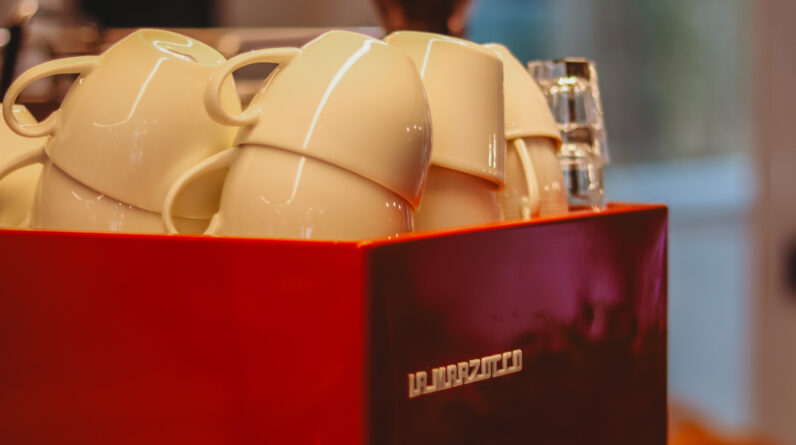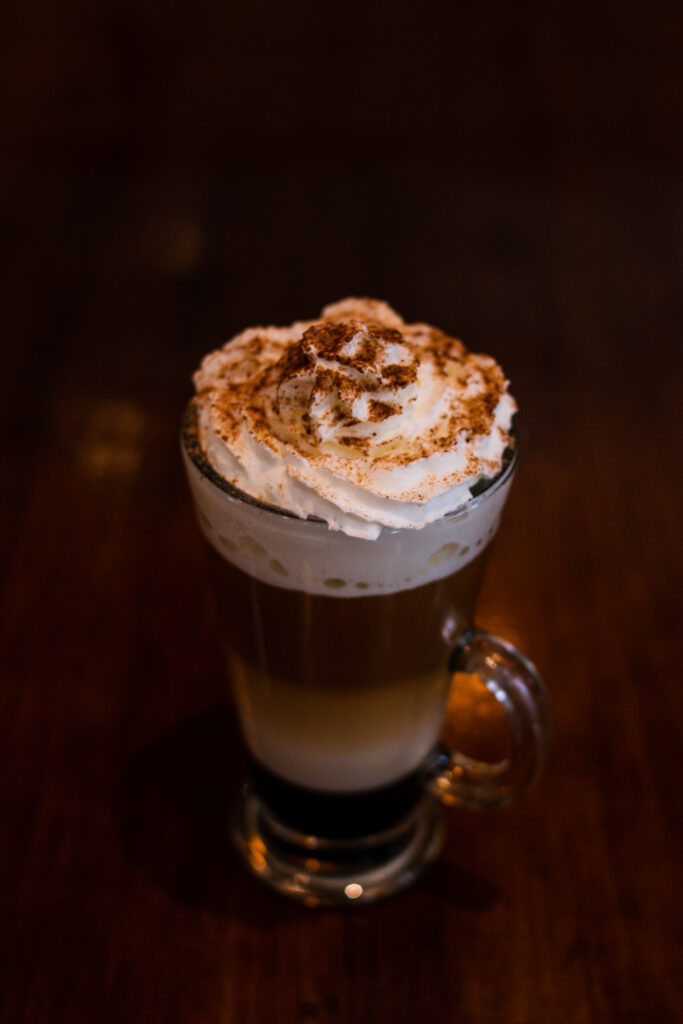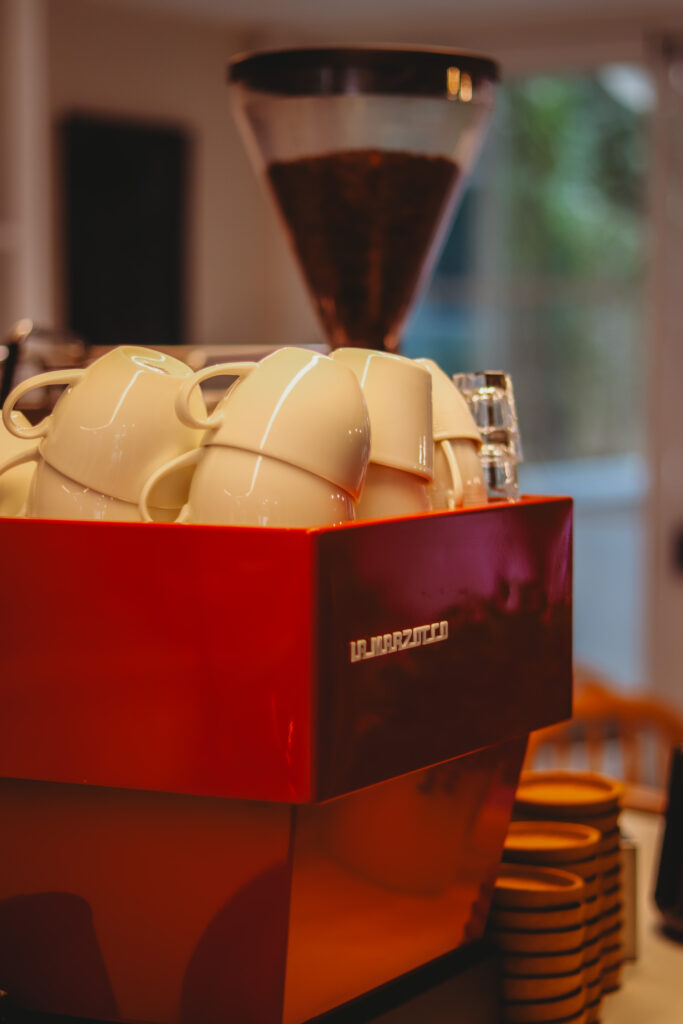
If you’re a coffee lover seeking a new twist on your daily brew, then let me introduce you to the fascinating world of mushroom coffee. With its unique combination of earthy mushrooms and invigorating coffee, this emerging trend is captivating taste buds and stirring up the beverage scene. As a testament to the ever-evolving art of brewing, mushroom coffee offers a surprisingly smooth and rich flavor profile, providing a delightful alternative to your customary morning cup of joe. Get ready to embark on a journey that will both surprise and satisfy your taste buds as you discover the art of brewing mushroom coffee.
The Art of Brewing Mushroom Coffee
Welcome to the world of mushroom coffee, where the rich and earthy flavors of mushrooms combine with the boldness of coffee to create a truly unique and satisfying beverage. In this comprehensive guide, we’ll take you through every step of the brewing process, from choosing the right mushrooms to enhancing the flavor of your brew. So grab your favorite mug and let’s explore the art of brewing mushroom coffee.
What is Mushroom Coffee?
Introduction to Mushroom Coffee
Mushroom coffee is a beverage that combines the traditional flavors of coffee with the health benefits of medicinal mushrooms. It offers a rich and robust taste, similar to regular coffee but with added earthy and unique flavors that are imparted by the mushrooms. The combination of coffee and mushrooms creates a harmonious blend, providing a balanced and flavorful cup of joe.
Benefits of Mushroom Coffee
Mushroom coffee is more than just a comforting and flavorful drink. It also boasts a range of health benefits that make it a great addition to your daily routine. The mushrooms used in mushroom coffee are known for their medicinal properties, such as immune-boosting, antioxidant, and anti-inflammatory effects. Additionally, mushroom coffee is often lower in caffeine than regular coffee, making it a popular choice for those looking to reduce their caffeine intake without sacrificing flavor.
Different Types of Mushroom Coffee
There are various types of mushroom coffee available in the market, each offering a unique flavor profile and set of health benefits. Some popular mushroom varieties used in coffee blends include lion’s mane, reishi, and chaga. Lion’s mane mushrooms are known for their cognitive benefits, reishi mushrooms for their calming properties, and chaga mushrooms for their immune-boosting effects. Exploring different mushroom coffee blends allows you to discover your preferred flavors and benefits.

Choosing the Right Mushrooms
Understanding Medicinal Mushroom Varieties
To choose the right mushrooms for your coffee, it’s important to have an understanding of the different medicinal mushroom varieties available. Each variety has its own unique set of health benefits and flavors. Lion’s mane mushrooms, for example, are known for their ability to promote brain health and support cognitive function. Reishi mushrooms are often used for their calming and stress-reducing effects. Chaga mushrooms are valued for their immune-boosting properties. Exploring the benefits of each mushroom variety will help you make an informed decision when selecting mushrooms for your coffee.
Popular Mushrooms for Coffee
When it comes to mushroom coffee, there are a few popular mushroom varieties that are commonly used. Lion’s mane mushrooms, known for their ability to support brain health, are a popular choice among coffee enthusiasts. They impart a subtle nutty flavor and a smooth texture to the coffee. Reishi mushrooms, with their calming properties, are another popular option. They add a slightly bitter and earthy taste to the brew. Chaga mushrooms, prized for their immune-boosting effects, offer a woody and earthy flavor profile.
Evaluating Quality and Sourcing
When choosing mushrooms for your coffee, it’s essential to evaluate the quality and source of the mushrooms. Look for mushrooms that are organically grown and free from any pesticides or harmful chemicals. Additionally, consider the sourcing practices of the brand or supplier to ensure sustainable and ethical practices. Quality mushrooms will not only enhance the flavor of your coffee but also ensure that you are reaping the full benefits of these incredible fungi.
Selecting the Coffee
The Importance of High-Quality Coffee
While mushrooms play a vital role in mushroom coffee, the quality of the coffee beans is equally important. Opting for high-quality coffee ensures a rich and flavorful base for your beverage. Look for coffee beans that are freshly roasted and sourced from reputable producers. Consider the origin of the coffee, as different regions offer distinct flavor profiles. Investing in good quality coffee will elevate your mushroom coffee experience to new heights.
Preferred Coffee Varieties for Mushroom Coffee
When selecting coffee for your mushroom coffee, certain varieties work particularly well with the flavors of the mushrooms. Medium to dark roast beans are often preferred as they complement the earthy and nutty flavors of the mushrooms. Additionally, single-origin coffees are a great choice as they allow you to appreciate the unique characteristics of the beans. Experimenting with different coffee varieties will help you find the perfect pairing for your mushrooms.
Roasting Levels and Flavor Profiles
Roasting levels have a significant impact on the flavor profile of the coffee. Lighter roasts offer brighter and more acidic flavors, while darker roasts bring out the coffee’s natural sweetness and impart bold and smoky notes. For mushroom coffee, a medium to dark roast is ideal, as it provides a robust and well-rounded flavor that pairs harmoniously with the earthy tones of the mushrooms. Consider the flavor profile you prefer and choose a roast level that complements it.

Finding the Perfect Blend
Determining Mushroom-to-Coffee Ratio
Finding the perfect balance between mushrooms and coffee is crucial for creating a well-rounded cup of mushroom coffee. The mushroom-to-coffee ratio will depend on personal preference and desired flavor intensity. Start by adding a small amount of mushrooms to your coffee and gradually increase or decrease the amount until you find the ideal ratio. This experimentation allows you to create a blend that suits your taste preferences.
Experimenting with Different Mushroom and Coffee Combinations
One of the joys of brewing mushroom coffee is the ability to experiment with different combinations of mushrooms and coffee. Each mushroom variety brings its own distinct flavors and health benefits to the mix. Consider the characteristics you desire in your cup and explore combinations that complement each other. For example, if you prefer a more mellow flavor, try blending lion’s mane and reishi mushrooms. If you’re seeking an immune boost, combining chaga and reishi mushrooms could be a great choice.
Achieving the Desired Taste Profile
Creating a mushroom coffee blend that matches your desired taste profile requires a bit of experimentation and fine-tuning. Play around with the mushroom-to-coffee ratio, adjusting it until you achieve the perfect balance of flavors. If the coffee is too strong, increase the amount of mushrooms. If the flavors are too subtle, add a bit more coffee. Tasting and adjusting as you go will help you create a mushroom coffee blend that is tailored to your taste buds.
The Brewing Process
Choosing the Right Brewing Equipment
With an array of brewing equipment available, choosing the right one for mushroom coffee is essential. Options such as pour-over brewers, French presses, and espresso machines all produce different results in terms of taste and texture. The key is to select a method that allows for the proper extraction of flavors from both the coffee and the mushrooms. Consider your brewing preferences and choose a method that suits your taste and time constraints.
Preparation Steps
Before diving into the brewing process, there are a few essential preparation steps to follow. Start by cleaning all brewing equipment to ensure a clean and fresh-tasting cup of coffee. Preheat your equipment, such as the coffee maker or kettle, to maintain optimal brewing temperatures. Additionally, ensure that your mushrooms are properly cleaned and prepared according to the recommendations of the brand or supplier. These preparation steps set the stage for a successful brewing process.
Understanding Extraction Time
Extraction time refers to the time it takes for the water to come into contact with the coffee and mushrooms and extract their flavors. The extraction time can vary depending on the brewing method and personal preference. Generally, longer extraction times lead to a stronger and more intense flavor, while shorter extraction times result in a milder taste. Take note of the recommended brewing times for your chosen brewing method to achieve the desired flavor profile.

Grinding the Beans
Understanding the Importance of Proper Grinding
Grinding the coffee beans to the correct consistency is crucial for ensuring optimal flavor extraction. The size of the grind affects the surface area exposed to the water during brewing, which in turn affects the flavor and strength of the coffee. For mushroom coffee, a medium-fine grind is often recommended, as it allows for proper extraction without over-extracting and resulting in a bitter taste. Investing in a high-quality grinder and grinding the beans just before brewing will enhance your coffee experience.
Grind Size for Mushroom Coffee
When it comes to mushroom coffee, the grind size can make a significant difference in the final cup. A medium-fine grind is generally recommended, as it strikes the right balance between flavor extraction and preventing over-extraction. The grind size ensures proper extraction of flavors from the coffee and mushrooms without producing a bitter taste. Experiment with different grind sizes to find the one that best suits your brewing method and taste preferences.
Different Grinding Methods and their Effects
Different grinding methods can have varying effects on the final taste of your mushroom coffee. Blade grinders, for example, tend to produce an uneven grind, leading to inconsistent extraction. Burr grinders, on the other hand, offer more precise control over the grind size, resulting in a more consistent extraction. The method you choose will ultimately depend on your preferences and the tools at your disposal.
Measuring the Ingredients
Determining the Right Amount of Mushrooms
Accurately measuring the amount of mushrooms used in your coffee is important for achieving a balanced flavor profile. Measure the mushrooms according to the recommended dosage provided by the brand or supplier. As you become more familiar with the taste and effects of the mushrooms, you can adjust the amount to suit your preferences. Keep in mind that the ratio of mushrooms to coffee will have a significant impact on the overall taste of your brew.
Measuring Coffee with Consistency
Consistency in measuring the coffee is essential for achieving the desired flavor in your mushroom brew. Use a kitchen scale or measuring spoon to ensure consistent measurements each time you brew. The recommended coffee-to-water ratio will depend on the brewing method you choose. Following the instructions provided by your particular method will help you achieve consistent and delicious results.
Precision in Ingredients for Optimal Results
To achieve optimal results in your mushroom coffee, precision in measuring the ingredients is key. Use measuring tools that allow for accurate and consistent measurements, ensuring that each cup is brewed to perfection. Pay attention to both the quantity and quality of the ingredients, as any variations can impact the flavor and overall enjoyment of the brew. By being precise and consistent, you can maximize the flavors and benefits of your mushroom coffee.
Water Temperature and Ratios
Finding the Ideal Water Temperature
Water temperature plays a crucial role in the extraction process and ultimately affects the flavor of your mushroom coffee. The ideal water temperature for brewing mushroom coffee is between 195°F to 205°F (90°C to 96°C). At this temperature range, the water is hot enough to extract the flavors from the coffee and mushrooms without scorching or overpowering them. Investing in a kettle with temperature control will help you maintain the ideal water temperature consistently.
Understanding Water-to-Coffee Ratio
The water-to-coffee ratio is another important factor to consider when brewing mushroom coffee. The recommended ratio will depend on your preference for a stronger or milder cup of coffee. As a general guideline, a ratio of 1:15 to 1:17 is often recommended, meaning 1 gram of coffee for every 15 to 17 grams of water. Adjusting the ratio allows you to customize the strength of your brew to suit your taste preferences.
Effects of Water Quality on Flavor
Water quality can greatly impact the flavor of your mushroom coffee. Using filtered water or bottled spring water ensures that any impurities or unwanted flavors are eliminated, allowing the true flavors of the coffee and mushrooms to shine through. Avoid using distilled water, as it lacks essential minerals that contribute to the overall taste. Experimenting with different water sources will help you find the one that produces the best results in terms of flavor and clarity.
Enhancing the Flavor
Adding Spices and Flavorings
If you want to take your mushroom coffee to the next level, consider adding spices and other flavorings to enhance the flavor profile. Common spices such as cinnamon, nutmeg, or cardamom can add warmth and complexity to your brew. You can also experiment with extracts like vanilla or almond for an extra layer of flavor. Start with a small amount and adjust to taste, allowing the unique flavors of the mushrooms and coffee to shine while adding a hint of aromatic delight.
Sweeteners and Creamers
Personalizing your mushroom coffee with sweeteners and creamers can further enhance the flavor and enjoyment of your brew. Sweeteners like honey, maple syrup, or stevia can add a touch of sweetness without overpowering the natural flavors. Non-dairy creamers such as coconut milk, almond milk, or oat milk can contribute to a creamy and velvety texture. Use these additives sparingly, allowing the unique flavors of the mushrooms and coffee to remain the star of the show.
Artistic Presentation and Garnishes
Why not put your creativity on display and elevate the visual appeal of your mushroom coffee? Experiment with artistic presentation and garnishes to add a touch of elegance and excitement to your cup. Garnish with a sprinkle of cocoa powder, a dusting of cinnamon, or a drizzle of caramel for a visually stunning experience. Not only will you delight your taste buds, but you will also please your eyes and create a memorable coffee moment.
Conclusion
Brewing mushroom coffee is an art form that combines the rich flavors of coffee with the health benefits of medicinal mushrooms. By selecting the right mushrooms, coffee, and brewing equipment, and paying attention to the intricacies of the brewing process, you can create a truly exceptional cup of mushroom coffee. So next time you’re craving a warm and comforting beverage, why not reach for the mushrooms and embark on an exciting journey of flavor and wellness? Cheers to the art of brewing mushroom coffee!









